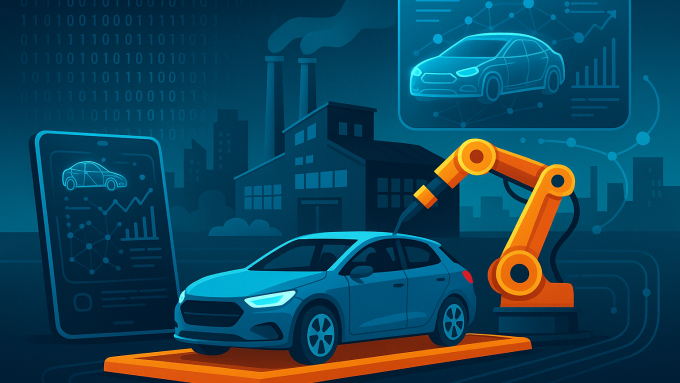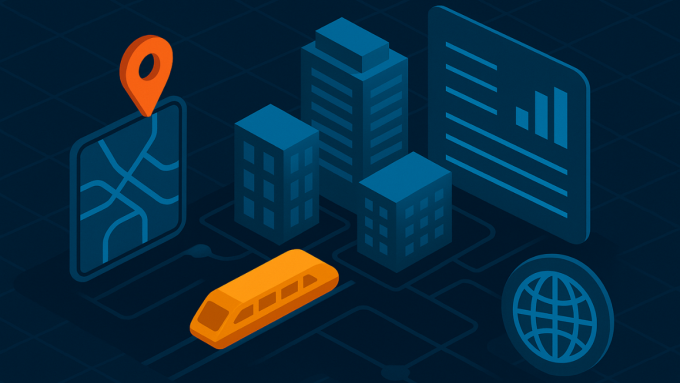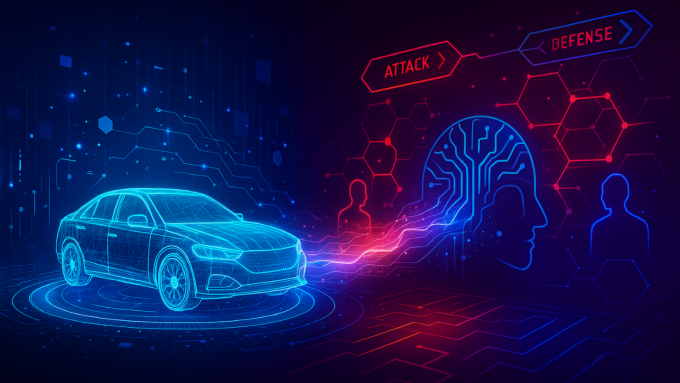In a Gemini Call presentation, John Ahmet Erkoyuncu from Cranfield University unveiled an ambitious digital twin demonstrator that tackles one of logistics’ most complex challenges: optimising carbon footprint across integrated air and road freight networks in the East Midlands.
The Multi-Modal Challenge
Transport decarbonisation becomes exponentially more complex when crossing domain boundaries. As John explained, the East Midlands Air Freight and Road Deliveries Demonstrator—part of the EPSRC-funded TranSiT programme—addresses a fundamental question: how do we enable decarbonisation when logistics operations span both aviation and road transport?
Working with colleagues from Heriot-Watt University and the University of Glasgow, the team is developing a digital twin that doesn’t just monitor individual transport modes but provides feedback across domains to optimise the entire network. With partners like DHL involved, this isn’t an academic exercise—it’s addressing real-world challenges in electrification, infrastructure planning, and operational resilience.
Beyond Simple Optimisation: The Five-Fold Challenge
The demonstrator tackles five interconnected objectives that reflect the complexity of modern logistics:
- Emissions Reduction: The primary driver, requiring visibility across all transport modes
- Investment Optimisation: Determining where to invest in electrification, sustainable aviation fuel (SAF), or alternative approaches
- Resilience: Maintaining optimised carbon footprints even when disruptions occur
- Cost Management: Ensuring environmental gains don’t create unsustainable economic burdens
- Business Innovation: Identifying new business models that emerge from these transformations
“We’re trying to understand things like electrification of fleet, how do we start to manage energy from an infrastructure point of view, where will the charging facilities be, what sort of facilities infrastructure will we need,” Erkoyuncu explained, highlighting the practical questions driving the research.
A Tiered Approach to Digital Twinning
The team has adopted a sophisticated framework that distinguishes between three levels of digital twin maturity:
Models: The Foundation
At the base level, models simulate logistics and fleet operations, predict energy demand, optimise cost-power trade-offs, and analyse decarbonisation approaches. These provide the computational foundation for understanding system behaviour.
Digital Shadows: Real-Time Monitoring
Building on models, digital shadows capture real-time or “right-time” data to analyse fleet performance, optimise operations, and monitor energy use and emission intensity. This creates a live view of actual operations against planned performance.
Digital Twins: Autonomous Feedback
The full digital twin implementation enables autonomous features, providing feedback for energy and emission management across the spectrum from first-party logistics (1PL) to fifth-party logistics (5PL) providers.
The Ontology Revolution: Making Data Speak the Same Language
Perhaps the most technically innovative aspect of the project is its use of ontologies to manage data integration and interoperability. As one questioner noted during the session, the team is using “4P ontology to help integrate disparate data from multiple sources”—a significant technical achievement.
The ontological architecture follows a hierarchical structure:
- Basic Formal Ontology (BFO): Provides the top-level framework
- Industrial Ontology Foundry: Offers domain-specific structures
- IES4 Information Exchange Standard: Enables consistent data exchange
- TranSiT Reference Ontology: Defines transport-specific concepts across air, road, maritime, and rail
This structured approach addresses one of logistics’ perennial challenges: data trapped in modal silos. By creating formal relationships between different data types and sources, the ontology enables automatic data connection to models—a crucial step toward real-time optimisation.
The Connector Challenge: Bridging Incompatible Worlds
During the Q&A, John revealed the team’s ambitious approach to interoperability. Rather than forcing all stakeholders to adopt a single standard, they’re developing what he calls a “connector-based approach”—a bridge that facilitates connections between any data source and any model.
“We should be able to connect any data to any model and vice versa,” he explained. “In some cases we’ll have a BFO approach, some cases IES… we see a connector-based approach is what we’re trying to develop so that we can connect these methodologies.”
This flexibility is crucial for real-world adoption. As John acknowledged, this approach “is proving challenging,” but the potential benefits—broader connectivity and true interoperability—justify the complexity.
Lessons from Implementation
When asked about key lessons from the ontology work, John offered pragmatic insights:
- Define Purpose First: “Trying to define the purpose at the top level is key so that you can scope what the data ranges”
- Avoid Perfectionism: “You can spend a lot of time… we need to balance that pretty much in terms of how much time you’re investing”
- Generate Value Incrementally: “How do we get some benefits along the way rather than waiting to be completing everything?”
These lessons reflect a mature understanding that perfect ontologies that never deploy are less valuable than good-enough systems that deliver results.
The Simulation in Action
The team has built an agent-based model using AnyLogic software that dynamically represents different road and air transportation scenarios. The simulation can automatically connect to data sources, optimise carbon footprint, and explore trade-offs between cost and emissions.
This is a decision support tool that can evaluate different decarbonisation strategies, from fleet electrification to SAF adoption, providing quantitative insights into their relative impacts.
Future Horizons: Toward Autonomous Optimisation
The project’s next steps focus on developing feedback mechanisms and tackling interoperability “at a large sort of sense.” The vision is compelling: a digital twin that can automatically ingest data from any source, integrate it with any model, and provide comprehensive representation and optimisation across transport domains.
This autonomous capability could transform how logistics networks adapt to carbon constraints. Rather than manual analysis and periodic adjustments, the system could continuously optimise routing, modal choices, and energy use based on real-time conditions and emission targets.
Implications for Transport Decarbonisation
The East Midlands demonstrator offers several crucial insights for the broader transport decarbonisation challenge:
Cross-Domain Integration is Essential
Single-mode optimisation creates suboptimal system-wide outcomes. True decarbonisation requires visibility and control across transport boundaries.
Ontologies Enable Scalability
By solving the data integration challenge through formal ontologies, the approach can scale beyond pilot projects to production systems.
Flexibility Trumps Standardisation
The connector-based approach acknowledges that forcing single standards is unrealistic. Success comes from enabling existing systems to communicate.
Value Must Come Early
The emphasis on incremental benefits reflects real-world constraints—projects that demand years of investment before showing returns rarely survive.
The Road Ahead
As logistics networks face mounting pressure to decarbonise, the TranSiT demonstrator provides a practical blueprint for cross-domain optimisation. By combining sophisticated ontologies, multi-tier digital twin architecture, and pragmatic implementation approaches, the team is showing how academic rigour can address real-world challenges.
The project’s emphasis on automated data integration and model connection addresses a critical bottleneck in digital twin adoption. If successful, this could enable rapid deployment across different logistics networks, accelerating the sector’s decarbonisation journey.
For organisations grappling with complex, multi-modal logistics networks, the message is clear: decarbonisation doesn’t require choosing between modes or accepting suboptimal trade-offs. With the right digital twin architecture and data integration approach, it’s possible to optimise across domains, balancing emissions, cost, and resilience in real-time.
The Digital Twin Hub’s weekly Gemini Calls continue every Tuesday at 10:30am BST, showcasing cutting-edge digital twin research and applications. All sessions are recorded and available to community members.
Ready to explore how digital twins can accelerate your transport decarbonisation journey? Join the Digital Twin Hub community to access insights, connect with researchers, and shape the future of sustainable logistics.



Leave a comment